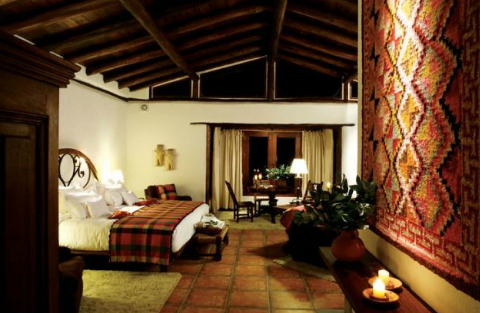Thanks to the Machu Picchu centenary, tourism in Cusco, Peru, is on a major upswing after a disastrous 2009 and 2010. But is it a long-term trend?
In 2009 the number of visitors to Cusco slid down as the global recession hit and general strikes disrupted services in the region. In 2010 the number declined further as landslides plagued Peru, and one even struck the Inca trail to Machu Picchu killing more than a dozen people. However, this year has shown recovery, as revenue from tourism in Cusco is up in July an estimated 25% year-on-year, according to the Peru’s National Chamber of Tourism.
The draw of Machu Picchu, the ruined mountaintop city of the Incans, is undeniable. Lonely Planet and other travel guidebooks list it as the top destination for South America, which means Cusco can continue to expect leisure visitors to keep coming after the centennial events are over.
“The tourism market will continue to grow little by little,” Graciana Garcia Iribarne, managing director at the Lima office of hospitality consultation company HVS International said. “The U.S. is one of the primary demands that arrive there, and also Europeans. The amount of tourism arriving there, divided by nationality is mostly from the outside. Peru is a country with very poor people.”
The first 5-star hotel to open in Cusco was the Libertador Palacio del Inka, and through the years the hotel’s customer has come from the U.S. and Europe, although the Latin American market is growing.
“Our customers are people with a very high income level. They are sophisticated travelers with a lot of information and looking for the best service,” Arturo Schwarz, general manager at Libertador Palacio del Inka said. “Average room rate is around US$180 per night. From January to June 2011 occupancy rate was 45%, increasing now because it is almost high season in Peru and because of celebrations of Machu Picchu’s 100 years of discovery.”
Inkaterra Peru Hotel, which has three lodging properties around Cusco, typically charges US$400-$500 a night and about US$250 at their 4-star hotels. Occupancy has increased throughout the year since the low season of early winter. “March and April we ran about 60%, and then until November we are at 80%,” Jose Koechlin Von Stein, chairman and founder of Inkaterra Peru Hotel said, adding that about 70% of Inkaterra’s customer base come from English-speaking countries.
Expanding supply
Given the sustained appeal of Machu Picchu to foreign visitors, Koechlin Von Stein said Inkaterra is looking to expand with two more hotels in the Cuzco area, one upscale in the city and one luxury in the Urubamba Valley. Meanwhile, competing brands JW Marriott and Orient-Express will manage hotels set to open in 2012.
However, given the heritage status of Cusco, which served as the capital of the Inca Empire and is littered with buried artifacts and structures from that era, building hotels can be an arduous process of working through bureaucratic red tape and pre-construction archeological digs.
“To build a hotel is very difficult. To get a permit takes two, three or five years. Everything is continued part of the national heritage,” Garcia Iribarne said. “Whenever you move a small piece of stone, suddenly you will discover some ruins under your building.”
Koechlin Von Stein said he was working with Peru’s new center-left government to try and streamline development regulations.
“Try to equate our place with places like Florence, places where there is a strong cultural heritage,” Von Stein said. “But we’re trying to improve that. There’s a new government coming in and we’re talking about this issue.”

